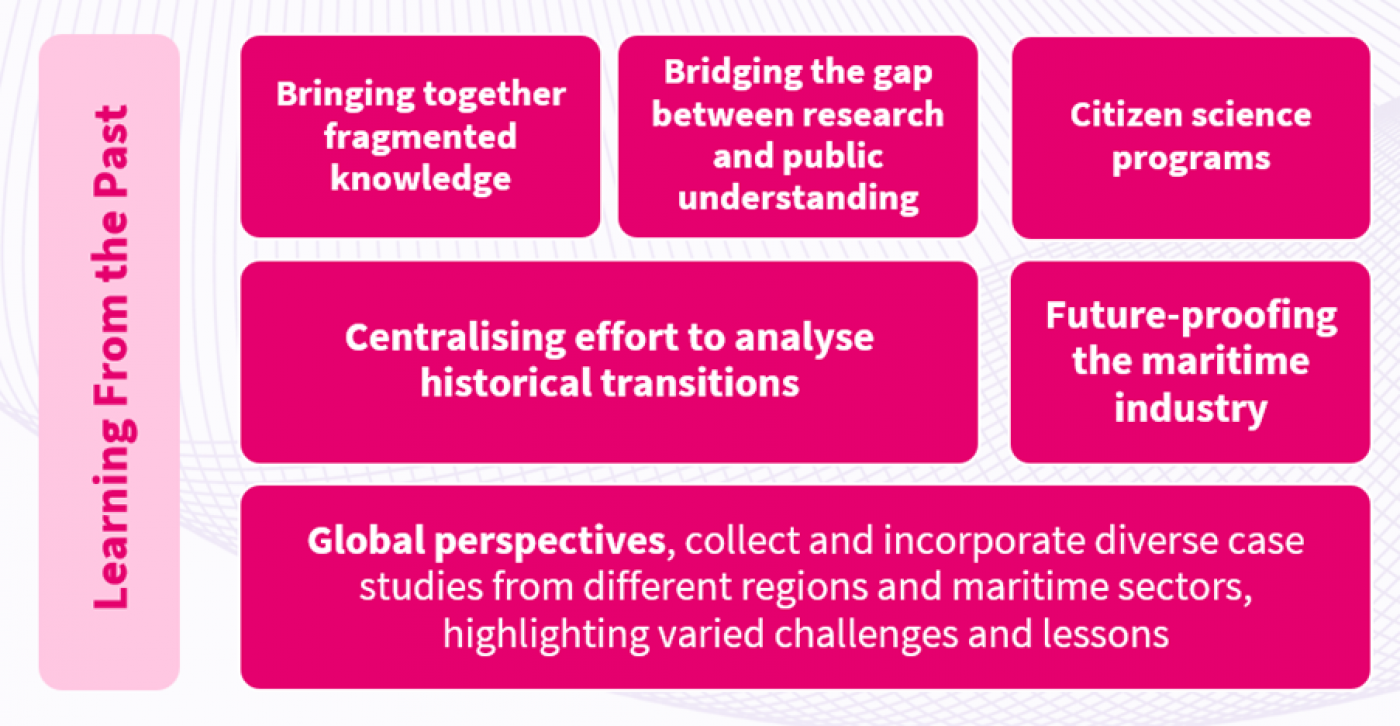The ship is a crucial unit of analysis for the Foundation, especially regarding safety. This theme supports a program that investigates the ship as the fundamental unit for understanding historical technological transitions and their impact on maritime safety, efficiency, and sustainability. By examining the ship's lifecycle—from design and construction to operation, regulation, repair, and decommissioning—this initiative will analyse how key innovations in shipbuilding, materials, and regulatory practices have influenced maritime safety and operational performance from the 1760s to the present day.
The ship serves as a tangible and practical focal point for exploring the relationship between technological advancements and industry practices. By studying individual ships and their contexts, the program will reveal how design evolution, material choices, and regulatory frameworks have impacted maritime risk management, environmental sustainability, and global trade networks. This ship-centred approach directly supports the Foundation’s mission to enhance safety and efficiency in the maritime sector while addressing emerging challenges in a rapidly evolving industry.
About Theme 5: Transitions –Ships, Ports and Technical Transition

The Ship as a Framework for Understanding Change
The lifecycle of a ship encapsulates the dynamic relationship between innovation and its impact on safety, efficiency, technical transition, and sustainability. Each ship serves as a microcosm of broader technological and regulatory developments, providing a fundamental unit of analysis to explore:
- Shipbuilding Innovation Examining how advances in materials, design, and propulsion systems have revolutionised safety and performance.
- Regulatory Evolution Investigating the development of safety standards and practices in response to ship-specific incidents and broader industry needs.
- Operational Efficiency Analysing how innovations onboard ships—from navigation systems to crew management—have reshaped maritime efficiency and safety.
- Decommissioning and Sustainability Exploring the challenges and opportunities presented by end-of-life ships, including material recycling and the impacts on human and environmental health.
The Challenge
The maritime world has experienced significant technological transitions throughout history, deeply intertwined with global human development. Each transition has brought both advantages and challenges:
- Fragmented Knowledge: Insights from these transitions are scattered across archives, shipyards, regulatory bodies, and academic institutions, making it challenging to form a comprehensive understanding.
- Lifecycle Challenges: New materials and technologies have affected every phase of a ship’s lifecycle, often introducing unforeseen safety and operational risks.
- Regulatory Lag: Historically, safety regulations have struggled to keep pace with rapid technological advancements, leading to gaps that have sometimes resulted in preventable incidents.
While these issues are recognised within specific disciplines, there is no centralised effort to analyse historical transitions comprehensively and integrate the lessons into future maritime practices. This initiative seeks to address that gap, bringing together fragmented knowledge and fostering collaboration across disciplines and sectors.
Objectives and Scope
Lifecycle Studies of Individual Ships like the Great Britain, Oceanic, and Emma Maersk, along with other lesser-known vessels, exemplify how technological transitions manifest in real-world applications. This initiative will explore the impact of innovations on all stages of a ship’s lifecycle, including design, construction, operation, maintenance, and decommissioning. Case studies could examine:
- The Role of Iron and Steel Investigating how advances in iron and steel have enhanced ship safety and capacity.
- Regulatory Responses to Disasters Analysing how regulatory responses to maritime disasters have shaped design standards.
- Adoption of Technology Exploring the adoption of technology in vessels and its impact on maritime operations.
Pattern Analysis Across Ships to identify patterns across fleets and eras, highlighting recurring themes such as:
- Impact of War and Trade Examining how war and trade have influenced shipbuilding priorities.
- Economic Shifts and Innovation Investigating how economic shifts drive innovation in ship design and efficiency.
- Lessons from Regulatory Failures Learning from failures in regulatory adaptation to new technologies.
- Learning from Success How technologies and regulatory changes have made a positive difference to safety and sustainability. The ways in which these lessons are shared and utilised.
- Sustainable Practices Focusing on the lifecycle of ships, this initiative will study how sustainable practices can be integrated into shipbuilding and decommissioning, informed by historical insights.
- Global Perspectives Collect and incorporate diverse case studies from different regions and maritime sectors, highlighting varied challenges and lessons.
- Environmental Focus Collect and record the environmental and safety consequences of technological transitions, such as pollution from older ships and the challenges of sustainable shipbreaking.

